-
 Bitcoin
Bitcoin $109,459.7682
2.44% -
 Ethereum
Ethereum $2,598.6052
6.29% -
 Tether USDt
Tether USDt $1.0003
0.00% -
 XRP
XRP $2.2734
3.95% -
 BNB
BNB $661.4886
1.58% -
 Solana
Solana $155.4825
4.35% -
 USDC
USDC $0.9999
-0.02% -
 TRON
TRON $0.2838
1.04% -
 Dogecoin
Dogecoin $0.1740
8.25% -
 Cardano
Cardano $0.6047
9.04% -
 Hyperliquid
Hyperliquid $40.2302
6.50% -
 Sui
Sui $2.9863
10.05% -
 Bitcoin Cash
Bitcoin Cash $509.5786
0.60% -
 Chainlink
Chainlink $13.8156
6.03% -
 UNUS SED LEO
UNUS SED LEO $9.0142
0.69% -
 Avalanche
Avalanche $19.0337
8.68% -
 Stellar
Stellar $0.2438
5.17% -
 Toncoin
Toncoin $2.9012
3.59% -
 Shiba Inu
Shiba Inu $0.0...01210
6.20% -
 Litecoin
Litecoin $90.0882
7.05% -
 Hedera
Hedera $0.1597
8.53% -
 Monero
Monero $326.3340
2.88% -
 Polkadot
Polkadot $3.6365
9.32% -
 Bitget Token
Bitget Token $4.6162
2.72% -
 Dai
Dai $1.0001
0.00% -
 Ethena USDe
Ethena USDe $1.0002
-0.01% -
 Uniswap
Uniswap $7.6403
10.47% -
 Pepe
Pepe $0.0...01060
12.03% -
 Aave
Aave $281.3664
7.56% -
 Pi
Pi $0.4992
1.76%
Can you chase the rise after the long-yang break through the platform and then step back on the neckline?
A long-yang candle breaking key resistance signals bullish momentum, and a pullback to the neckline offers a high-probability entry if support holds with strong volume.
Jul 03, 2025 at 02:21 pm
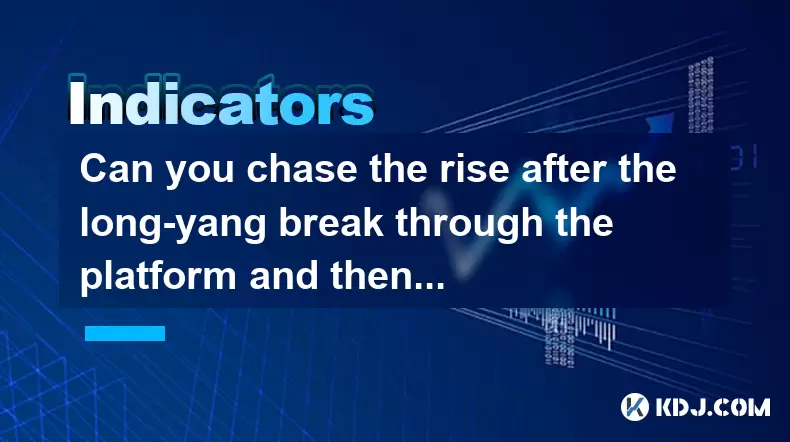
Understanding the Long-Yang Breakthrough Pattern
In technical analysis within cryptocurrency trading, a long-yang candlestick pattern typically refers to a large bullish candle that signals strong buying pressure. When this candle breaks through a key resistance level—such as a consolidation platform—it can indicate the start of a new uptrend. Traders often look for confirmation after such a breakout to determine whether the momentum will continue or if it's a false move.
The phrase “step back on the neckline” implies a potential pullback or retest of a prior support or resistance level after a breakout. The neckline, in this context, could refer to a trendline drawn at the base of a breakout formation, such as a head and shoulders pattern or an ascending triangle. Understanding how price reacts near this level is crucial for traders looking to chase the rise without entering too early.
Key Concept: A long-yang candle breaking through a consolidation platform suggests a shift from sideways movement to a potential uptrend.
Analyzing the Platform Breakout Scenario
A platform breakout occurs when price consolidates within a defined range before surging past the upper boundary with significant volume. In crypto markets, these platforms often form during periods of indecision, where buyers and sellers are balanced. Once broken, especially with a long-yang candle, the psychological sentiment shifts toward bullish dominance.
After such a breakout, experienced traders wait for a retest of the breakout level to confirm its validity. If the price steps back to the former resistance (now acting as support) and holds, it presents a second entry opportunity for those who missed the initial surge.
Important Tip: Always check volume during the breakout. A valid breakout usually coincides with a spike in trading volume, confirming institutional or whale participation.
What Happens After the Neckline Retest?
Once the price pulls back to the neckline or former resistance-turned-support, traders analyze the candlestick behavior at that zone. If the price bounces cleanly off the neckline with bullish candles forming, it’s a sign that the uptrend remains intact.
However, if the price breaks below the neckline and closes there decisively, it may invalidate the breakout scenario. This is why traders use stop-loss orders just below the neckline to protect their positions.
- Watch for rejection candles: Bullish engulfing patterns, hammers, or inverted hammers at the neckline can signal renewed buying interest.
- Volume during retest: Healthy retracements often occur on lower volume, while resumptions of the uptrend should come with rising volume.
Critical Observation: The strength and speed of the retest determine whether the breakout has real momentum or is merely a trap for retail traders.
How to Chase the Rise Safely
Chasing a breakout can be risky, especially in volatile crypto markets. However, using a disciplined approach can increase your chances of catching a continuation move after the neckline retest.
Here’s a step-by-step guide:
- Identify the breakout level: Mark the top of the platform or the high of the long-yang candle.
- Wait for a pullback: Monitor price action for a return to the neckline.
- Confirm support hold: Use candlestick patterns or moving averages (like the 20 EMA) to validate the bounce.
- Enter on a close above the recent swing high: This ensures you’re entering after the price has shown strength.
- Set a stop-loss: Place it just below the neckline or the lowest point of the retest.
- Target projection: Measure the height of the platform and project it upward from the breakout point.
Essential Rule: Never enter blindly after a breakout. Wait for a retest and confirmation to avoid fakeouts.
Technical Indicators That Help Confirm the Move
While price action is king, certain indicators can enhance your ability to confirm the validity of the breakout and retest.
- Moving Averages: The 20-period and 50-period EMAs help identify dynamic support levels during a retest.
- RSI (Relative Strength Index): During a healthy pullback, RSI should not drop into oversold territory (<30). A mid-range RSI (40–60) indicates balance before a potential resumption.
- Volume Profile: Look for a Value Area High (VAH) around the breakout level to gauge where institutional activity might be lurking.
- Fibonacci Retracement Levels: A retest near the 38.2% or 50% retracement of the initial move up can serve as ideal entry zones.
Pro Tip: Combine volume spikes with bullish candlestick reversals at the neckline for higher probability entries.
Frequently Asked Questions
Q1: What is a long-yang candle in crypto trading?
A long-yang candle refers to a large bullish candlestick with minimal upper and lower wicks, indicating strong buying pressure throughout the period. It’s commonly seen during breakouts and often precedes continued upward movement.
Q2: How do I differentiate between a valid breakout and a false one?
A valid breakout typically comes with increased volume, follows a clear consolidation pattern, and holds support upon retest. False breakouts often occur on low volume and fail to maintain price above the breakout level.
Q3: Can I trade the neckline retest without waiting for a full bounce?
It’s possible but riskier. Some traders use limit orders just above the neckline or place pending buy orders anticipating a bounce. However, entering prematurely can lead to losses if the price fails to hold.
Q4: Should I always wait for the price to touch the neckline exactly?
Not necessarily. Sometimes the price will hover slightly above or below due to market noise. Focus more on the general area and confluence with other technical tools like moving averages or Fibonacci levels.
Disclaimer:info@kdj.com
The information provided is not trading advice. kdj.com does not assume any responsibility for any investments made based on the information provided in this article. Cryptocurrencies are highly volatile and it is highly recommended that you invest with caution after thorough research!
If you believe that the content used on this website infringes your copyright, please contact us immediately (info@kdj.com) and we will delete it promptly.
- Crypto Summer Buys: Is Shiba Inu Out, and What's In?
- 2025-07-03 18:30:12
- Bitcoin, Solaris Presale, and Coin Watch: Catching the Next Wave
- 2025-07-03 19:10:11
- BONK ETF Buzz: Catalyst for a Meme Coin Moonshot?
- 2025-07-03 19:50:12
- Sui Coin, Bitcoin Solaris, and the Presale Opportunity: Catching the Next Wave
- 2025-07-03 19:50:12
- Sui Coin, Bitcoin Solaris, and Presale Opportunities: What's the Buzz?
- 2025-07-03 19:55:14
- MEXC's Bitcoin Reserves: A Fortress of Asset Coverage
- 2025-07-03 19:55:14
Related knowledge
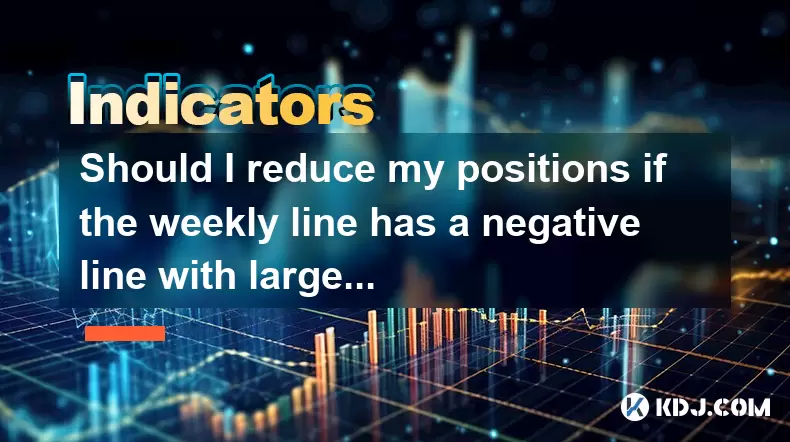
Should I reduce my positions if the weekly line has a negative line with large volume + the daily line falls below the middle Bollinger line?
Jul 01,2025 at 10:50pm
Understanding the Weekly Line with Negative Candle and Large VolumeWhen analyzing cryptocurrency charts, a weekly line that forms a negative candle accompanied by large volume is often interpreted as a strong bearish signal. This pattern suggests that institutional or large traders are actively selling their positions, which can foreshadow further price...
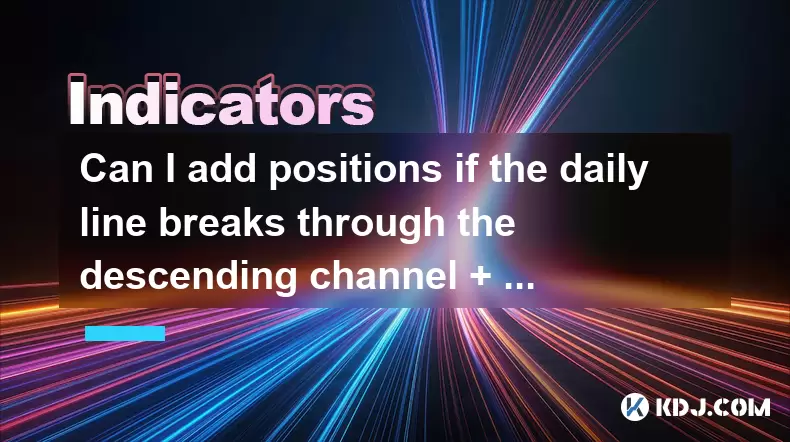
Can I add positions if the daily line breaks through the descending channel + the 30-minute moving average is in a bullish arrangement?
Jun 30,2025 at 11:00pm
Understanding the Descending Channel BreakoutWhen a daily line breaks through a descending channel, it indicates a potential shift in market sentiment from bearish to bullish. A descending channel is formed by drawing two parallel trendlines, where the upper trendline connects the lower highs and the lower trendline connects the lower lows. A breakout o...
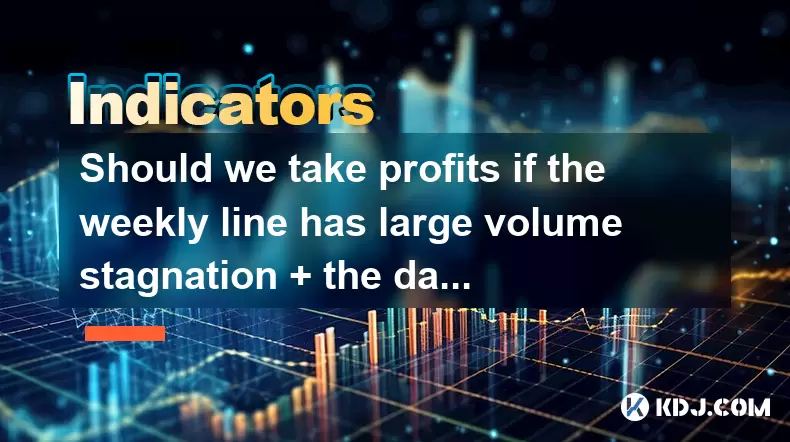
Should we take profits if the weekly line has large volume stagnation + the daily RSI top divergence?
Jul 01,2025 at 05:22pm
Understanding Weekly Volume Stagnation in Cryptocurrency TradingIn cryptocurrency trading, weekly volume stagnation refers to a situation where the total trading volume over a week remains relatively flat or shows no significant increase despite price movements. This phenomenon can indicate that institutional or large traders are not actively participat...
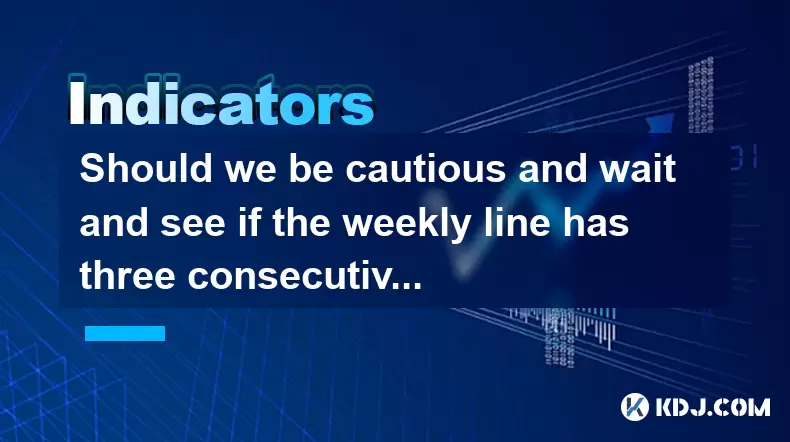
Should we be cautious and wait and see if the weekly line has three consecutive Yin lines + the daily MACD green column enlarges?
Jul 01,2025 at 12:42am
Understanding the Weekly Three Consecutive Yin Lines PatternIn technical analysis, three consecutive Yin lines on a weekly chart indicate a strong bearish trend. Each Yin line represents a week where the closing price is lower than the opening price, signaling consistent selling pressure. When this pattern appears three times in succession, it often sug...
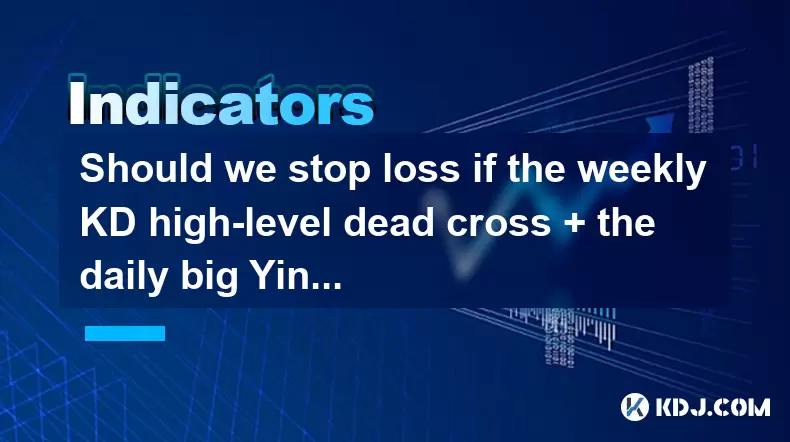
Should we stop loss if the weekly KD high-level dead cross + the daily big Yin line breaks?
Jul 01,2025 at 09:49pm
Understanding the Weekly KD High-Level Dead CrossIn technical analysis, KD (K-D indicator) is a momentum oscillator that helps traders identify overbought or oversold conditions in the market. The weekly KD high-level dead cross occurs when both the K-line and D-line are above 80 (indicating overbought territory), and the K-line crosses below the D-line...
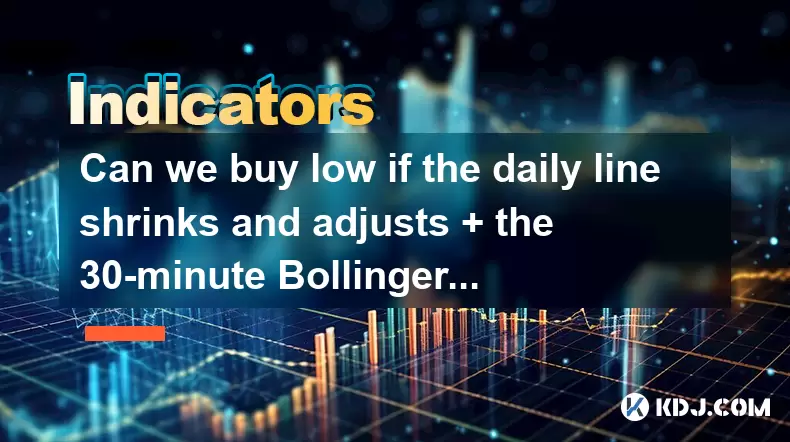
Can we buy low if the daily line shrinks and adjusts + the 30-minute Bollinger lower rail supports?
Jul 02,2025 at 12:29pm
Understanding the Technical Indicators: Bollinger Bands and Daily Line ShrinkingIn cryptocurrency trading, technical indicators play a critical role in identifying potential entry and exit points. The Bollinger Bands consist of a moving average (typically 20 periods) and two standard deviation lines plotted above and below it. When prices touch or appro...

Should I reduce my positions if the weekly line has a negative line with large volume + the daily line falls below the middle Bollinger line?
Jul 01,2025 at 10:50pm
Understanding the Weekly Line with Negative Candle and Large VolumeWhen analyzing cryptocurrency charts, a weekly line that forms a negative candle accompanied by large volume is often interpreted as a strong bearish signal. This pattern suggests that institutional or large traders are actively selling their positions, which can foreshadow further price...

Can I add positions if the daily line breaks through the descending channel + the 30-minute moving average is in a bullish arrangement?
Jun 30,2025 at 11:00pm
Understanding the Descending Channel BreakoutWhen a daily line breaks through a descending channel, it indicates a potential shift in market sentiment from bearish to bullish. A descending channel is formed by drawing two parallel trendlines, where the upper trendline connects the lower highs and the lower trendline connects the lower lows. A breakout o...

Should we take profits if the weekly line has large volume stagnation + the daily RSI top divergence?
Jul 01,2025 at 05:22pm
Understanding Weekly Volume Stagnation in Cryptocurrency TradingIn cryptocurrency trading, weekly volume stagnation refers to a situation where the total trading volume over a week remains relatively flat or shows no significant increase despite price movements. This phenomenon can indicate that institutional or large traders are not actively participat...

Should we be cautious and wait and see if the weekly line has three consecutive Yin lines + the daily MACD green column enlarges?
Jul 01,2025 at 12:42am
Understanding the Weekly Three Consecutive Yin Lines PatternIn technical analysis, three consecutive Yin lines on a weekly chart indicate a strong bearish trend. Each Yin line represents a week where the closing price is lower than the opening price, signaling consistent selling pressure. When this pattern appears three times in succession, it often sug...

Should we stop loss if the weekly KD high-level dead cross + the daily big Yin line breaks?
Jul 01,2025 at 09:49pm
Understanding the Weekly KD High-Level Dead CrossIn technical analysis, KD (K-D indicator) is a momentum oscillator that helps traders identify overbought or oversold conditions in the market. The weekly KD high-level dead cross occurs when both the K-line and D-line are above 80 (indicating overbought territory), and the K-line crosses below the D-line...

Can we buy low if the daily line shrinks and adjusts + the 30-minute Bollinger lower rail supports?
Jul 02,2025 at 12:29pm
Understanding the Technical Indicators: Bollinger Bands and Daily Line ShrinkingIn cryptocurrency trading, technical indicators play a critical role in identifying potential entry and exit points. The Bollinger Bands consist of a moving average (typically 20 periods) and two standard deviation lines plotted above and below it. When prices touch or appro...
See all articles

























































































